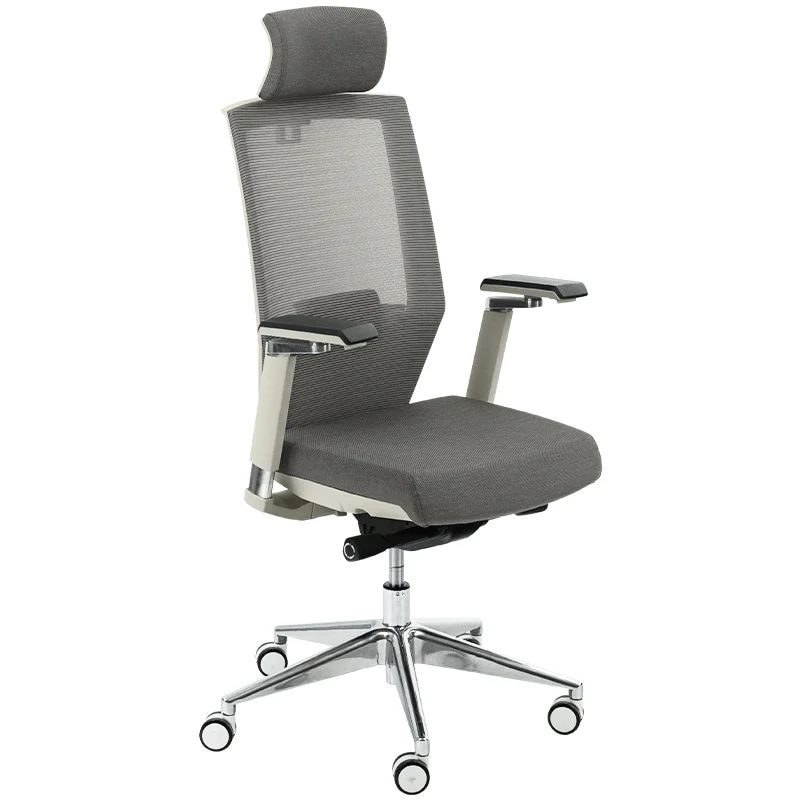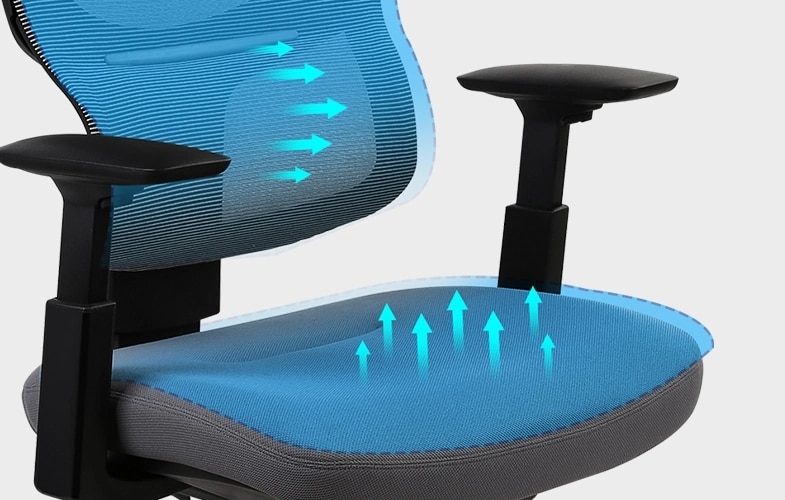Aches and pains are an everyday part of life, but for many, they are inconveniences that could potentially be relieved with the right kind of ergonomic furniture that specifically targets the area that you are suffering from.
With so many options now on the market, it can be difficult to find something that works specifically for you, which is why we’ve put together this handy guide to the most common aches and pains and what FlexiSpot has on offer that could help them.
Lumbar Support
As great as modern office chairs are, there is something inherently unnatural about their shape, which is where the all-important lumbar support comes in. The lumbar region refers to your lower back and consists of the five vertebrae situated between the diaphragm and sacrum (pelvis).
The problem is that our spines have a natural curvature that often works very differently than standard chairs, car seats - or indeed anything without specifically designed support.
Good quality ergonomic chairs, such as the Back Support Office Chair BS10, come with a lumbar support which essentially fills in the small gap at the bottom of the spine and helps prevent that dull lower back ache that many suffer from. What’s more, most FlexiSpot office chairs come with a lumbar support that can be raised and lowered so you can find that sweet spot that’s just right for you.
Tip - To get the full benefit from a lumbar support, make sure that you are sitting upright and the support itself is situated just above the seat itself. You should be able to feel the pressure of the support on your lumbar region.

Armrests
Let’s start by saying that the argument over whether it’s better to have armrests or not is far from over. One train of thought is that they support our upper limbs and reduce the load on our lower back, while the other states that by having them we increase our chances of shoulder shrugging, contact stress on the forearm and negative leaning postures.
It’s clear from the debate that armrests work for some and not for others and that these two ways of thinking are both technically correct. However, it does highlight an issue that is frequently overlooked while discussing armrests - are people just not using them the right way?
The major problem concerning armrests is that many are often at a fixed height. Considering that we know exactly how armrests should be used, it’s incredible that chairs are still being produced with fixed armrests that don’t work for many people and are often quickly removed as a result.
Ideally, you want something like the Flexi-Chair Ergonomic Office Chair BS8, with armrests that can be raised and lowered to the perfect height.
Tip - Armrests should be placed at your natural elbow position and when you use them you should feel the pressure on your neck and shoulders subside. When your arms are resting on them, they should be at a comfortable 90-degree angle and should help to prevent your shoulders from becoming stiff.

Back Mesh
For a long time, a sturdy backed chair was all that we knew, then came along something that changed it all - the back mesh.
When we’re talking about vital office chair components, a back mesh might not be the first thing that comes to mind, but as anybody who has had to unstick themselves from a chair at the end of a long, very sweaty day will tell you, a bit of circulation does wonders.
But while a persistently sweaty back is an excellent reason to invest in something with a back mesh, it’s certainly not the only reason. Back meshes also provide a much better ergonomically minded arch that allows the back to fit snugly beside it, rather than be jammed next to it as with traditional chairs.
An office chair with a back mesh, such as the Back Support Office Chair BS10, allows the spine to sit in its natural shape which supports both the lumbar and upper spine area while helping to maintain a good posture.
Tip - Often people tend to slouch forward when using a chair but this completely negates the benefit that a back mesh gives. Sit back into the mesh and allow your back and spine to fall into their natural positions.
Cushioned seating
Sitting for hours on end can be hard on the buttocks - especially on a poor chair. If you stand up at the end of the day and feel a dull ache where your bottom used to be, it could be a sign that the padding on your chair isn’t up to scratch.
All FlexiSpot office chairs come with a high-quality cushioned seating area that is designed so that your posterior can sit on it for hours without developing significant pains. Some, like the Flexi-Chair Ergonomic Office Chair BS8, even come with a W-shaped design that reduces pressure on the buttocks even further. It’s also formed of elastic foam rubber that does not sink or become deformed over time, meaning your chair retains that comfortable imprint for many years.
Tip - People often develop pains in the buttock region either because the chair is poor quality or they are not sitting properly or slanting to one side. Try keeping your body dead straight with an equal amount of pressure on both left and right buttocks, but also don’t forget to stand up now and again to let the blood circulate.